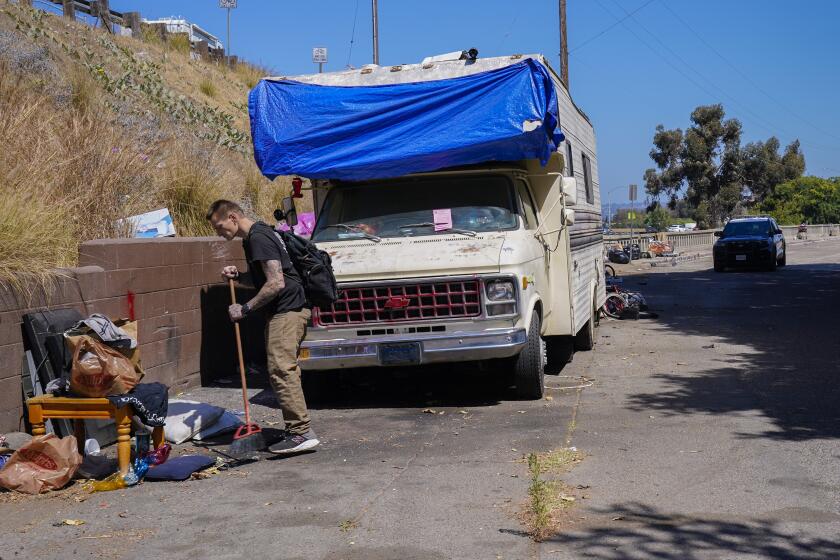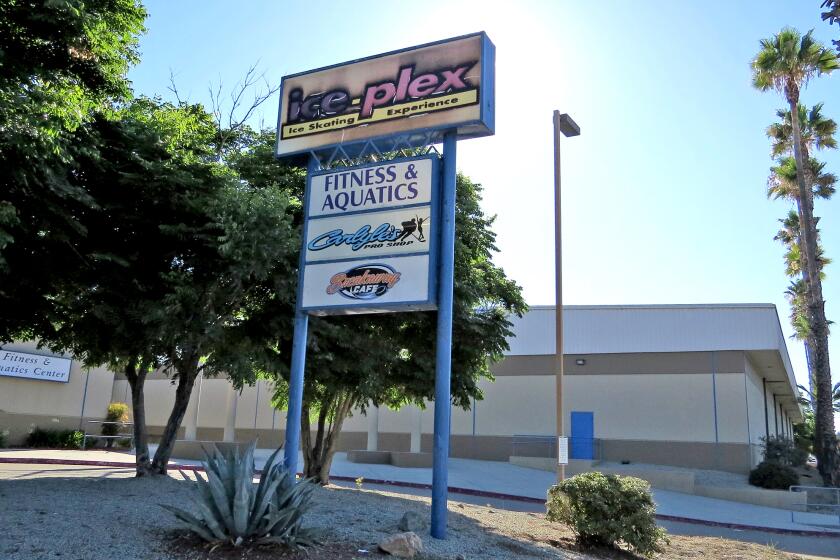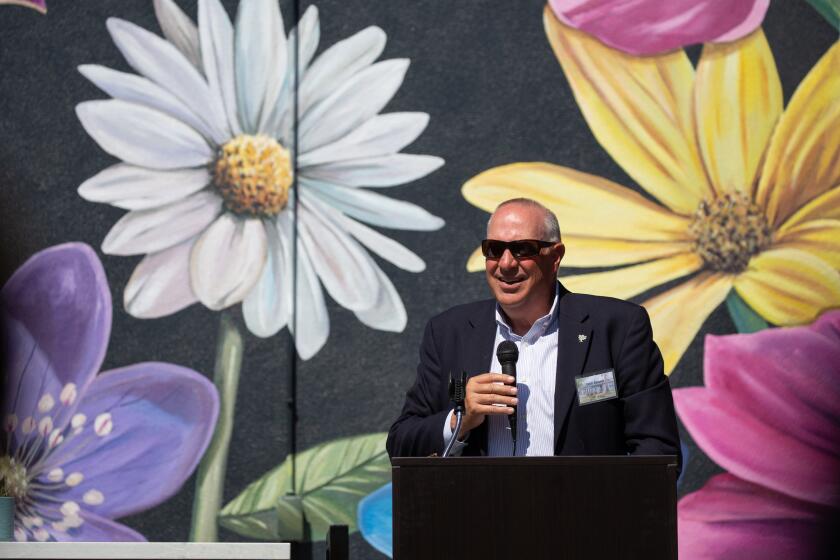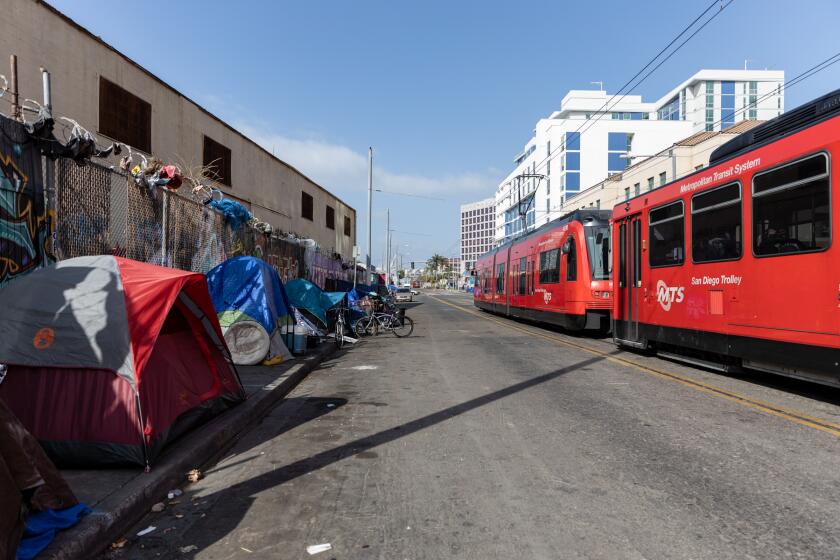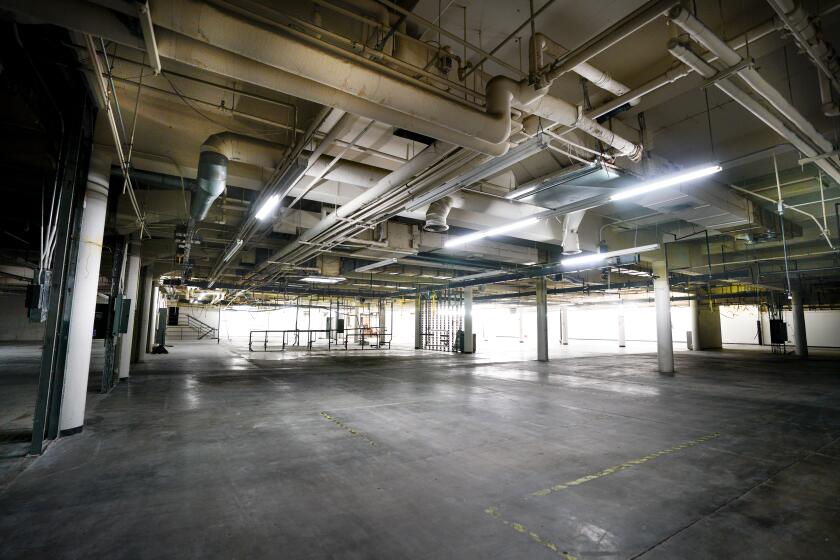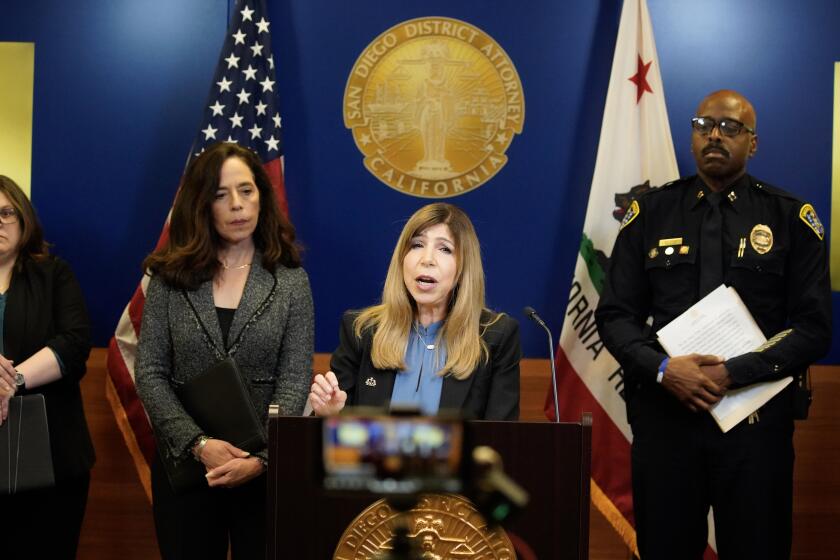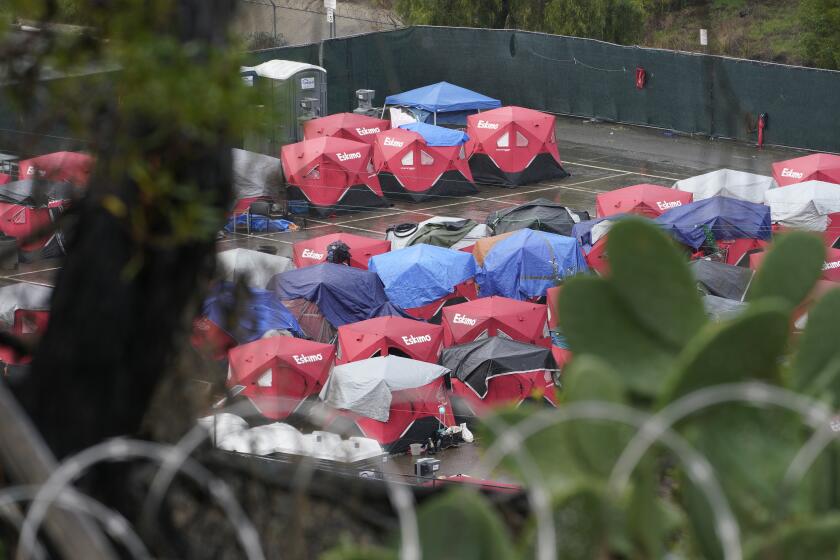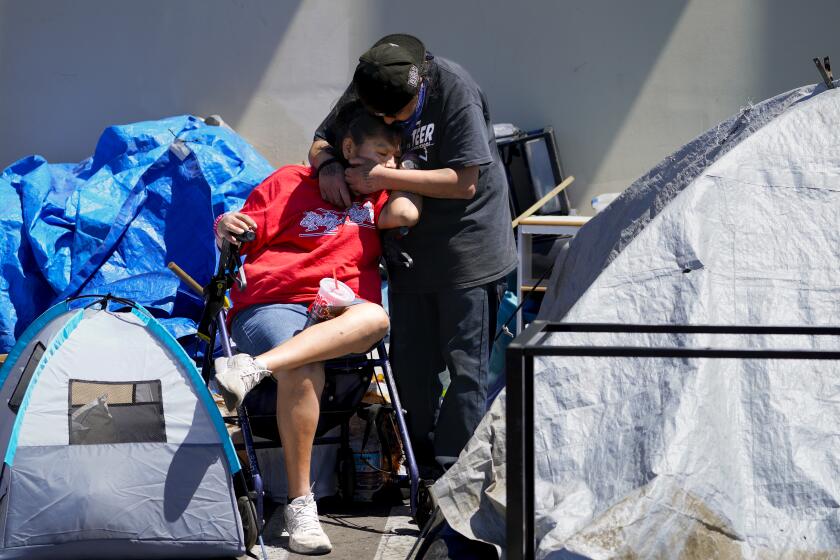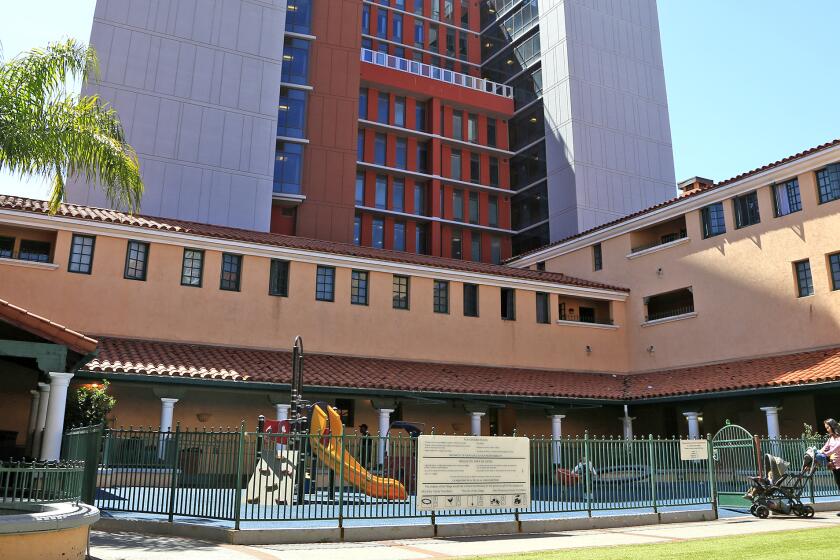Death on the streets: Vigil for homeless people recalls horrific accident that claimed three lives
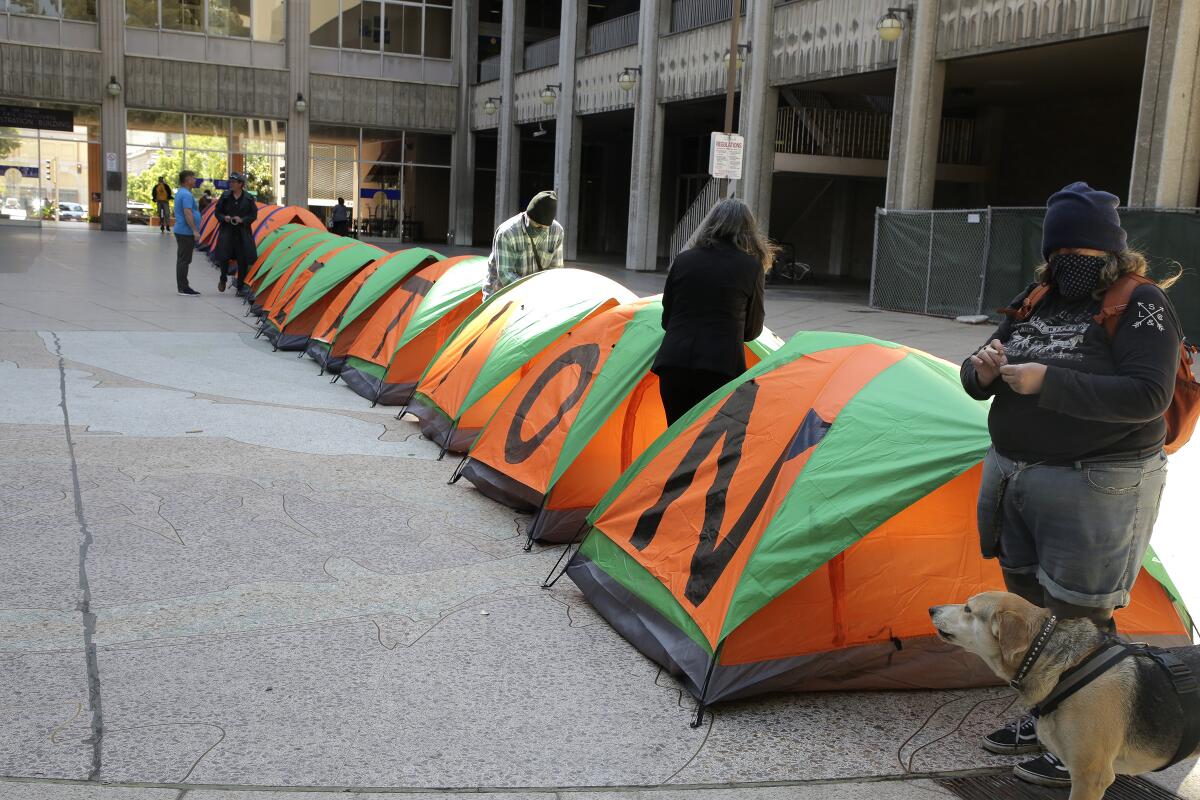
The event marked the one-year anniversary of when a vehicle jumped a curb and killed the men as they slept in their tents
More than 400 homeless people died in San Diego County last year, an increase of more than 20 percent from the previous year, and the final tally likely will be significantly higher.
But it was the lives of three men — Rodney Diffendal, Walter Jones and Randy Ferris — who were specifically remembered at a Tuesday afternoon vigil at the San Diego Concourse. The three were seeking shelter in an encampment under a B Street bridge at San Diego City College when a vehicle jumped the curb and plowed into their tents, killing them and injuring several others.
Exactly one year later, a row of 19 empty tents lined a walkway in the shadow of San Diego City Hall, each carrying a hashtag or letter that spelled a message to city officials: “#EndCriminalization.”
“The ultimate goal of today is to memorialize those who have died, to remind people that many are not homeless by choice,” said former state Assemblywoman Lori Saldaña, who suggested the vigil as a way of drawing attention to the plight of people living without shelter. “It is a very dangerous situation.”
Saldaña and others at the event also spoke about laws, such as illegal lodging or encroachment on public property, that often result in tickets or jail for homeless people.
“The criminalization of homelessness is ongoing,” Saldaña said. “People are being cited, they’re being arrested. We don’t want people to be criminalized and forced to pay fines and court costs. They’re already deeply in debt, they don’t have funding for housing, and by forcing them to pay even for the cost of criminalization, they’re getting more distanced from housing.”
Saldaña said people on the street have few alternatives because shelters are mostly full. The tally of available beds that day found 28 were available for single adults, four for transitional aged youths and two for families with children.
Attorney Coleen Cusack, who has represented homeless people facing charges for illegal lodging or other violations, also spoke at the vigil.

“Criminalization is futile, it’s pointless,” she said. “It takes money out of the housing sector and hands it to police who then use it to dehumanize people.
“We need to embrace the fact that we have individuals living amongst us who don’t have a house,” she said. “Not arrest them, but help them.”
The Rev. Beth Johnson of Palomar Unitarian Universalist Fellowship in Vista also spoke.
“What is happening on our streets, what is happening to our houseless neighbors is criminal,” she said. “The actions of the city are criminal, not the action of our neighbors. End the criminalization of poverty. We need to fight poverty, not the poor.”
John Brady of Lived Experience Advisors said his group advocates for safe camps and tiny villages to get people off the street because many will not go into shelters, which sometimes are offered as an alternative to jail.
“We do not believe shelters should work on the laws of coercion,” he said. “We believe shelters should work on the laws of attraction.”
Following the fatalities near City College last year, San Diego Mayor Todd Gloria and other elected officials agreed that more needed to be done to make life safer for homeless people.
“Let me state it very clearly: A street is not a home,” Gloria said just days after the accident. “It’s not humane or safe to keep allowing our unsheltered neighbors to sleep under bridges, in alleys or in canyons.”
Since the accident, the city has expanded homeless outreach teams to include non-law enforcement officers, opened a shelter for people who are dealing with addiction and mental illness, and recently announced the opening of another shelter specifically for women.
Thousands of people still remain without shelter in the city and throughout the county, however, and a count of homeless people conducted last month is expected to find the population has increased.
The accident near City College last year drew considerable attention and sparked calls for action to improve the conditions of people living on the street. The deaths, however, were among hundreds of fatalities in the homeless population last year.
The county Medical Examiner’s Office reported 344 people who may have been homeless died in 2020, with some found on the street or other outdoor places while others were in hotels or apartments where they might have been living temporarily.
That number increased to 434 in 2021. Of that number, 110 were people known to be homeless and living in hotels through a county program, shelters or outdoors. The others were people who had indicators of being homeless — some were found in parking lots, vehicles, motels or in unknown areas after being taken to a hospital — but their housing situation was unknown, said Chuck Westerheide, public safety group communications officer for San Diego County.
Westerheide said the number of homeless people who died in San Diego County last year likely will be higher than what’s now known because the Medical Examiner’s Office still has 400 open cases from last year, which likely include homeless eople.
The final report of deaths in one calendar year usually is completed in June, but the latest report may not be complete until July or August due to a large increase in deaths by drugs. The Medical Examiner’s Office’s mid-year report for 2021 showed a 149 percent increase in deaths due to fentanyl, accounting for 381 known fatalities that year.
Fentanyl and other drugs took a toll on the homeless population over the past two years, with the Medical Examiner’s Office reporting 439 deaths caused by drugs or medication.
Another 74 homeless or possibly homeless people died from motor vehicle accidents, and 50 deaths were listed as alcohol related. Nine people died by hanging, 15 by falls, five by firearms, two by stabbings or cuts, four by fire and four by hypothermia.
Many died of natural causes, including 81 who died of cardiovascular disease.
Of the homeless people who died over the past two years in San Diego County, 63 were in their 20s or younger, 140 were in their 30s, 122 were in their 40s, 245 were in their 50s, 164 were in their 60s, 32 were in their 70s and 5 were in their 80s. The ages of some people were unknown.
According to the National Health Care for the Homeless Council, people who are homeless die an average of 12 years earlier than the average population.
A recent report from Arcadia Data Research found people facing housing insecurity were 21 times more likely to have congestive heart failure, eight times more likely to have chronic obstructive pulmonary disease, five times more likely to have diabetes, four times more likely to have hypertension, six times more likely to have chronic kidney disease and nine times more likely to have end-stage renal failure.
Get Essential San Diego, weekday mornings
Get top headlines from the Union-Tribune in your inbox weekday mornings, including top news, local, sports, business, entertainment and opinion.
You may occasionally receive promotional content from the San Diego Union-Tribune.

